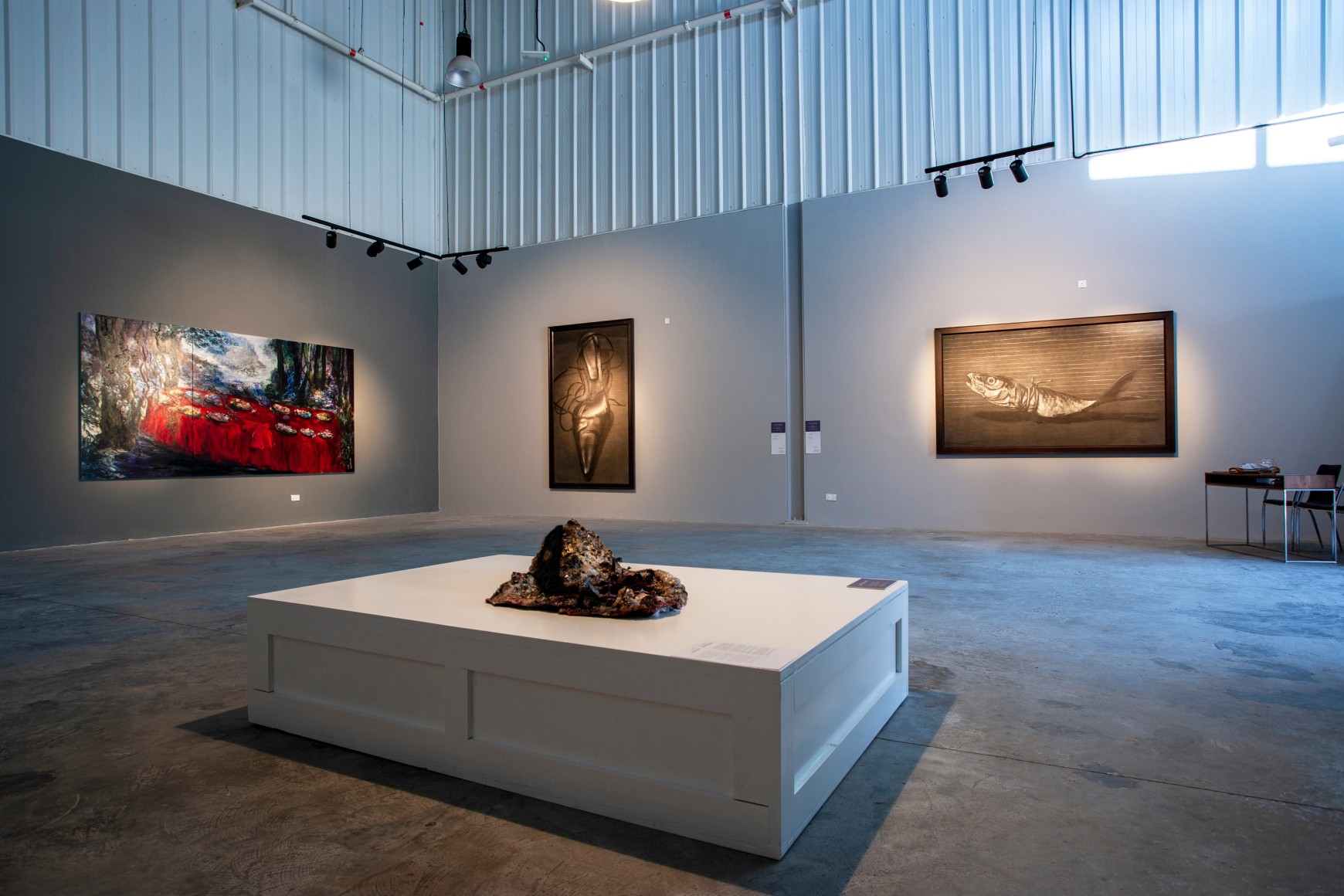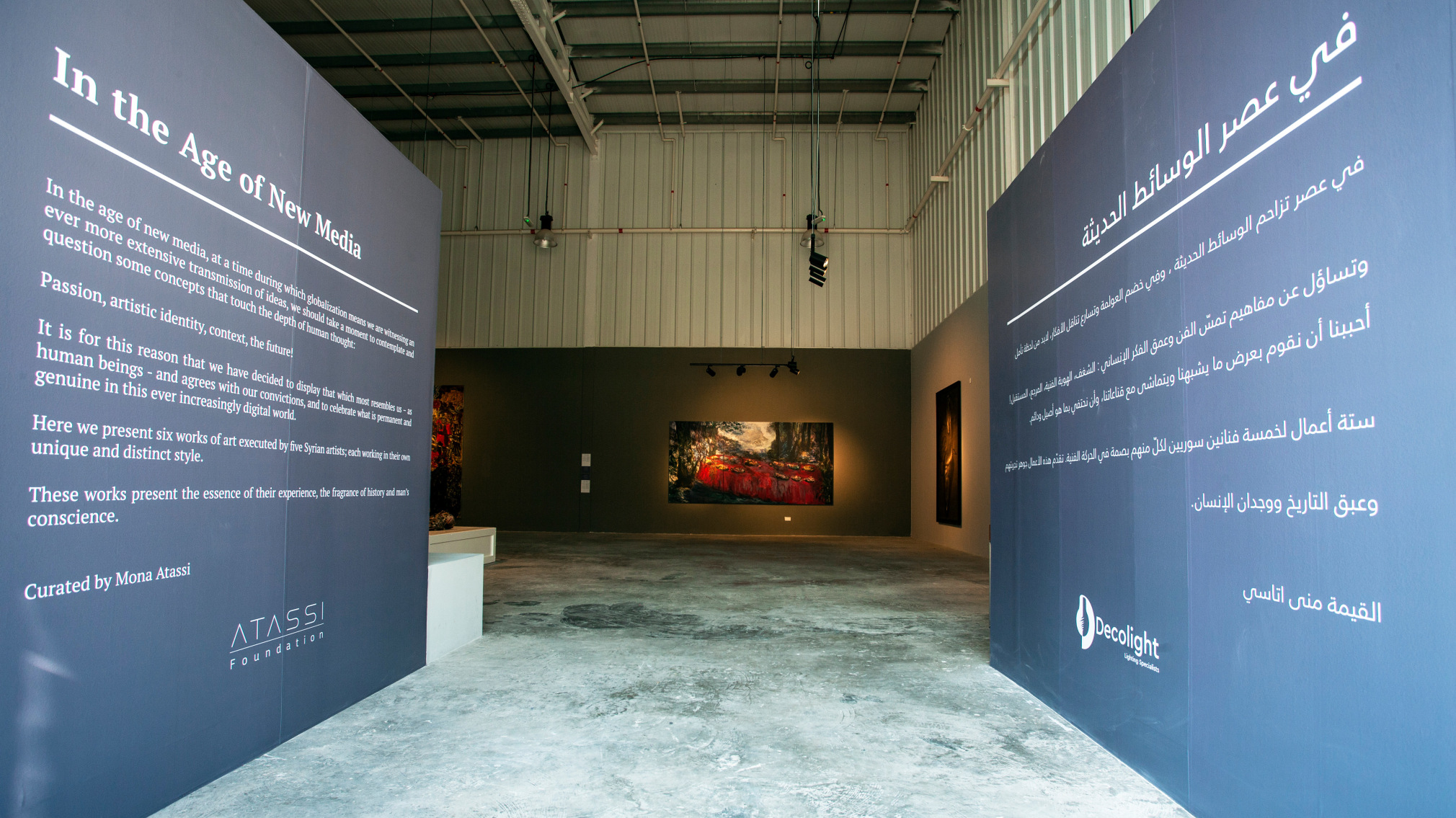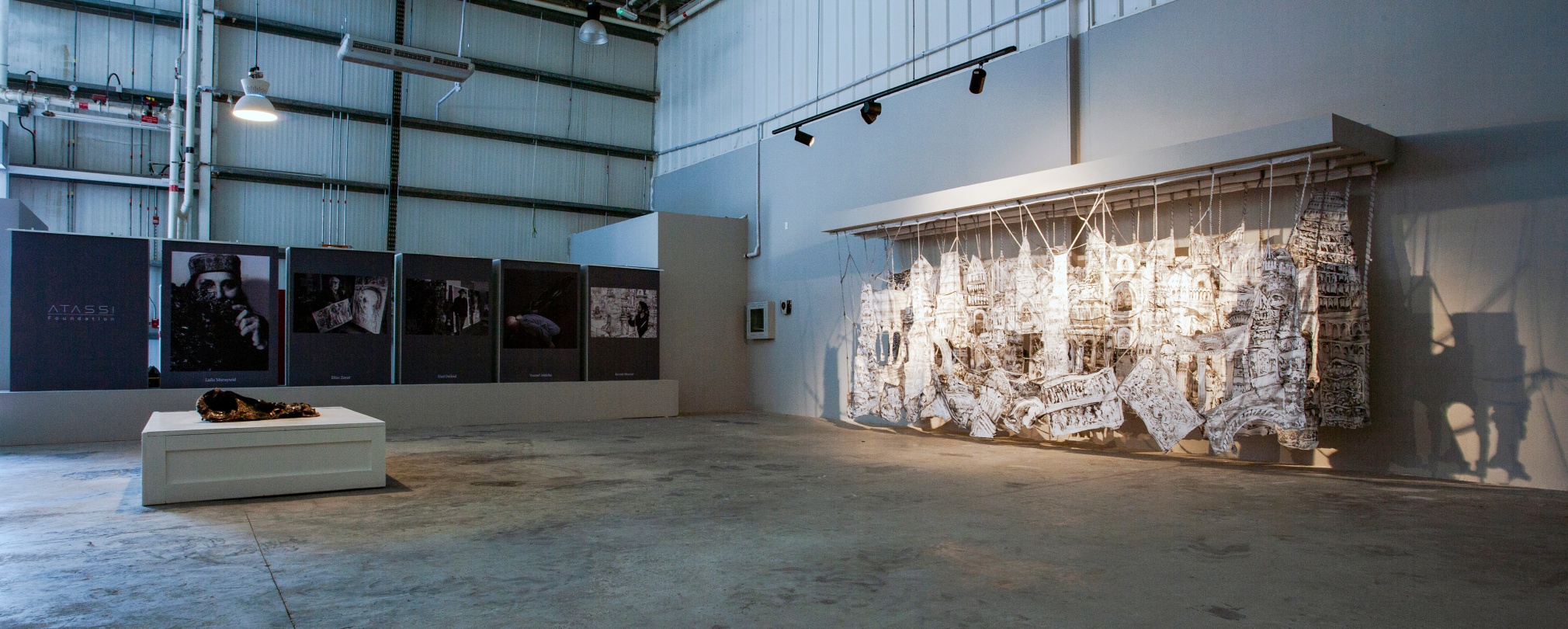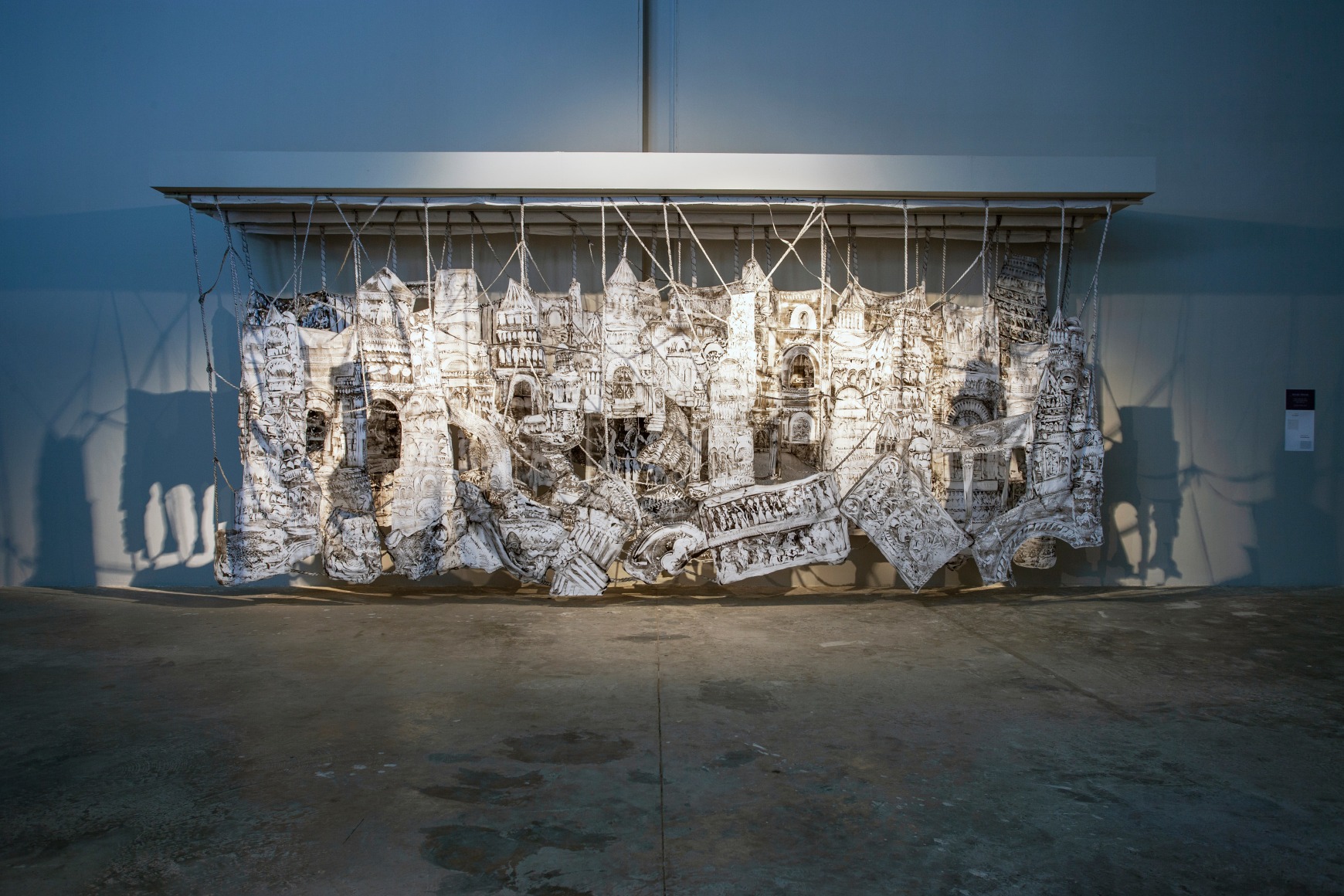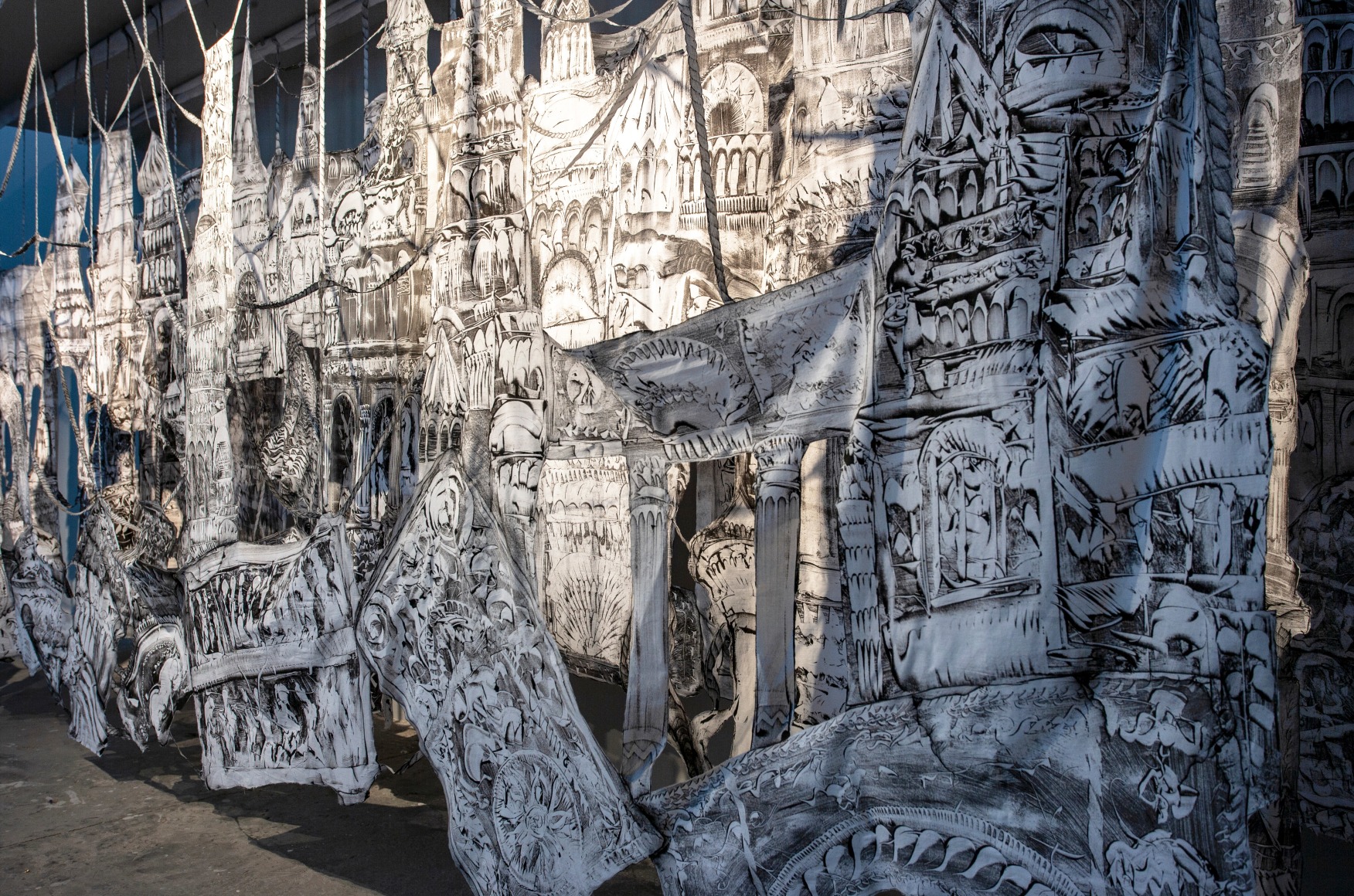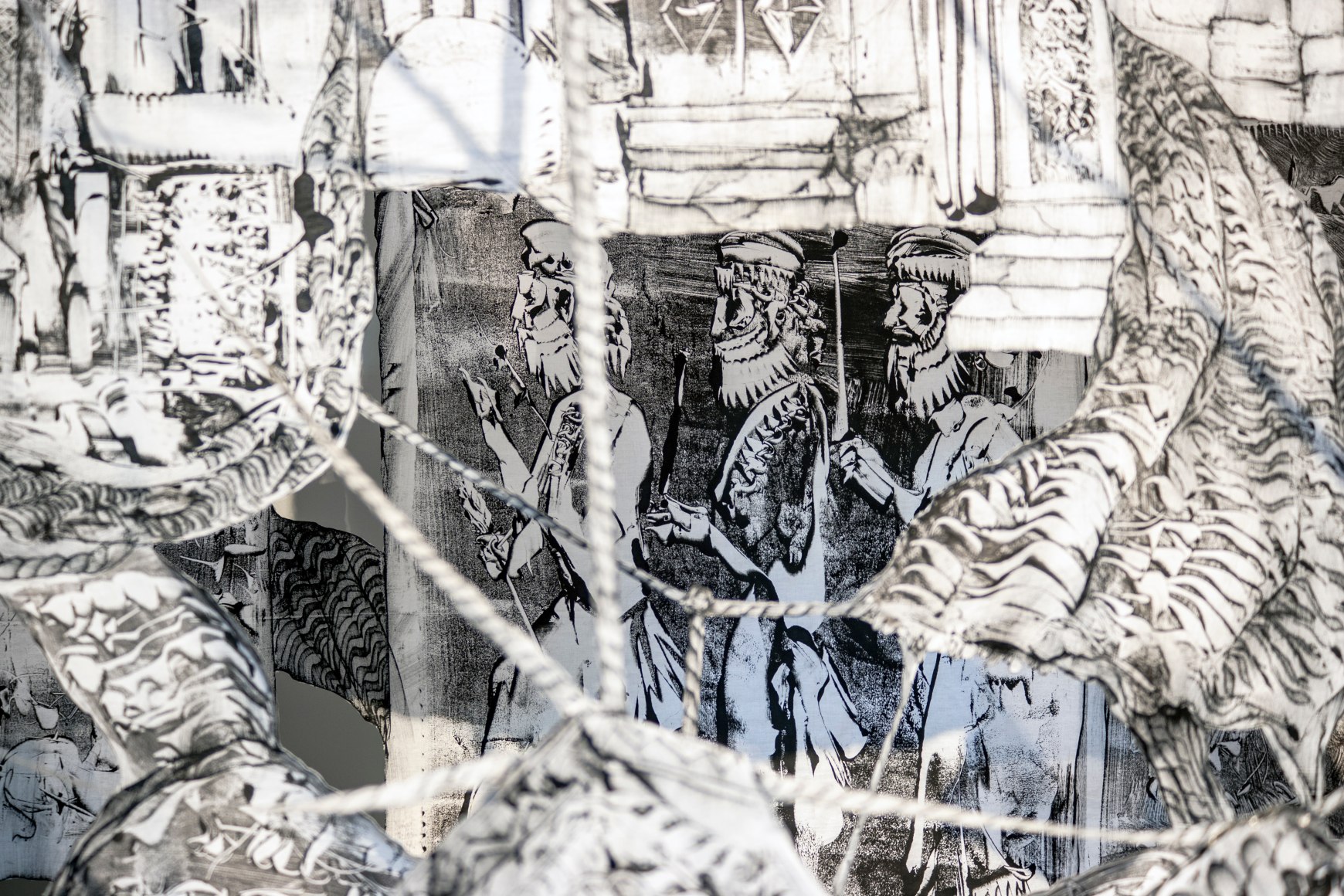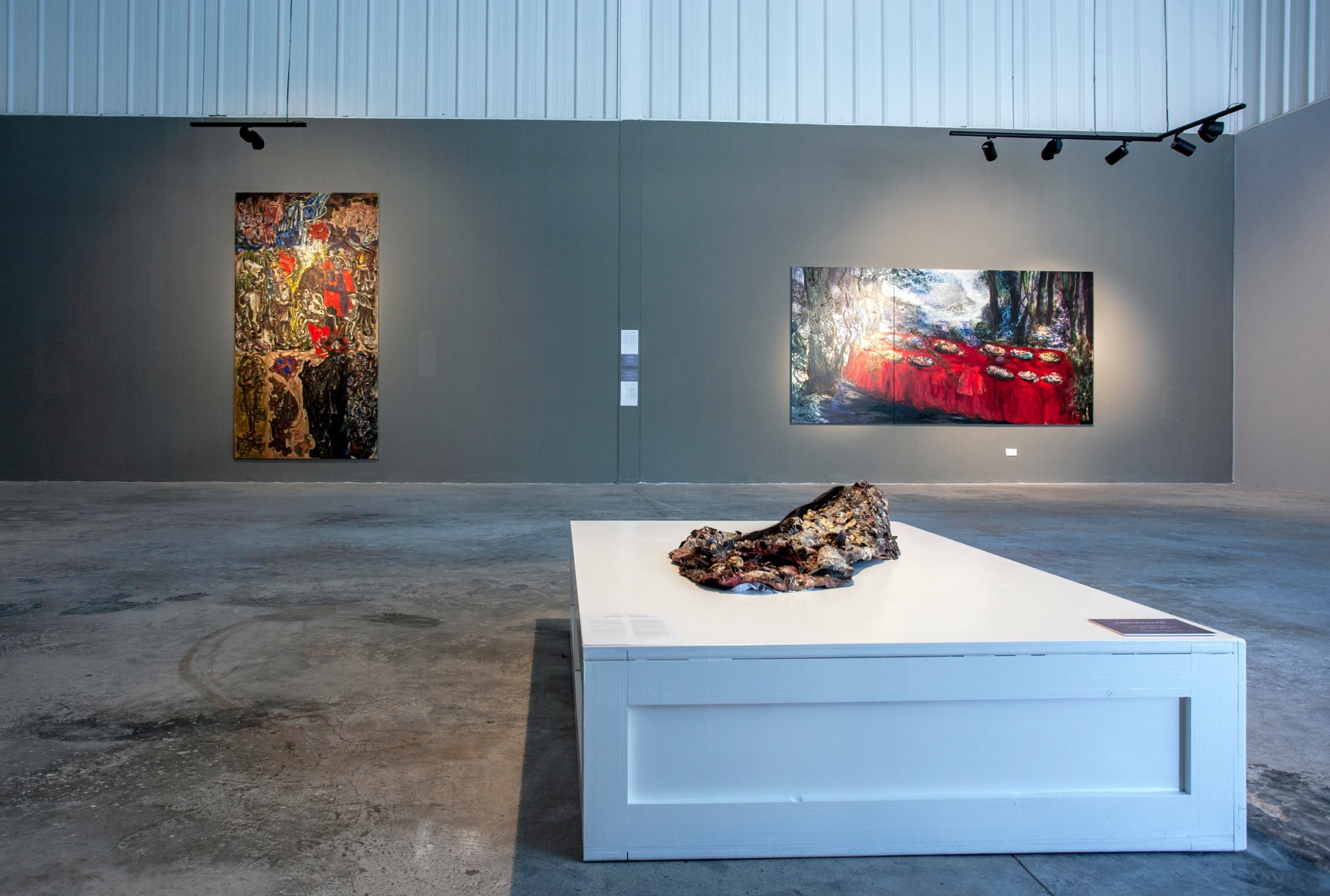This exhibition marks the Atassi Foundation’s second collaboration with Alserkal Avenue. Here, we present six unique pieces produced by five well-recognized and much-loved Syrian artists. Four of these works were selected from the Atassi Foundation collection, while the other two are on loan directly from the artists themselves. The concept is simple: a thoughtful selection of contemporary classics, referring to the traditional art of painting.
The aim of the exhibition is to stress the importance of a painting both in its historic, classical sense as well as its contemporary dimension – the elements which allow a painting to defy time; and here time is endless. With their artistic strength and significance, their spiritual and human depth, these works are not limited to their art historical periods, but, rather, become timeless, for their ability to communicate with the human conscience.
The work of the great artist Elias Zayat, for example (The Deluge – The Gods abandon Palmyra), is based on the story of the flood as told in Mesopotamian legends, the Torah and the Holy Quran. Zayat draws on this ancient story, recounted across several ages, in order to re-tell it through a fantastic contemporary artistic language. For Zayat, “the essence of the story of The Delugeis to reorganize the universe and rebuild it in an honourable manner after it was over-flooded by evils and darkened by injustice and mendacity.” The time and date are irrelevant to Zayat, what is important is the understanding that every flood is followed by a new and fertile birth.
The work by young artist Kevork Mourad – exhibited in Dubai for the first time – also takes us to Mesopotamia, albeit through a work executed by means of a completely different technique to Zayat. Mourad draws on muslin fabric and then cuts the drawing and arranges it in rows to present an installation of sorts. This imbues his work with a special flavour and a powerful presence: through it, he declares his affiliation to this part of the earth.
Through the masterful work of Ziad Dalloul, meanwhile, we delve into worlds that have their own peculiarities and a nature unfamiliar to us. Water could be running through them, bedchambers spread out and roses strewn over tables, making us wonder whether they are imagined, or, rather, how he could have imagined them. Are they the creation of other worlds, more spacious than our own physical world? Perhaps, for the artist, they represent his own space for retreat and contemplation. He resorts to those places tirelessly, like a worshipper resorts to his sanctuary, drawing and painting them again and again… it is an act of ecstasy for him and for us as well.
Contemplation lies at the heart of Layla Muraywid’s work too – with all the finesse of a woman’s sensation and intense emotions, she creates an installation using an empty abandoned bed. Beside this bed lies a shape that could be a woman’s dress or perhaps a woman’s body, studded with great skilfulness, ever so patiently over days and days, with stones, colours and various materials; waiting…. What is she waiting for? Is it her lover, warmth or security? Muraywid has given her drawing a beautiful but painful name: The Waiting!
Elsewhere, there is a woman’s shoe of an incredible size and a dead fish tied up with rope. What does all that mean? Is it possible to create a work of art from a petty old shoe? Yes, it seems so. Youssef Abdelke’s proficiency in drawing and plastic art transforms the cheapest things into a contemporary portrait. But what about that dead fish with all its horrible details? We must grasp its implications: oppression, violence and death. Abdelke’s works carry symbols and indications, criticism and accusation, revolt, energy and mutiny. They express his ethics and his human attitudes. From the gradation of the blackness of the charcoal along with the magic of the drawing, whiteness surfaces and light emerges, both promising us a better and fairer world.
Ultimately, nothing defies time except genuine work that stems from true feelings; the diligent and permanent work of these painters and artists. No matter how much the techniques differ and the concepts change and generations evolve, that which is beautiful and lasting is authentic and true, or in other words, truth and authenticity is beauty itself.


